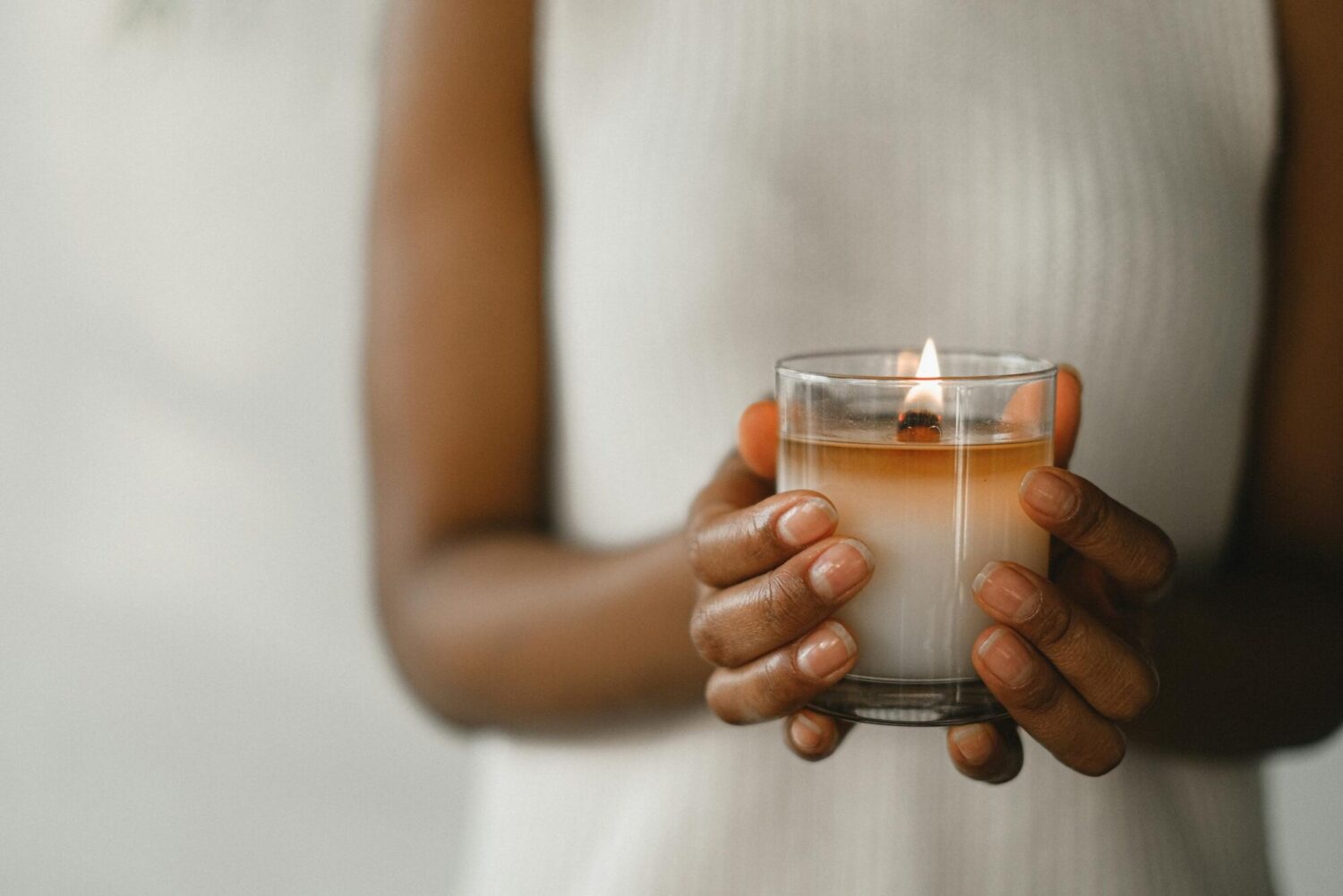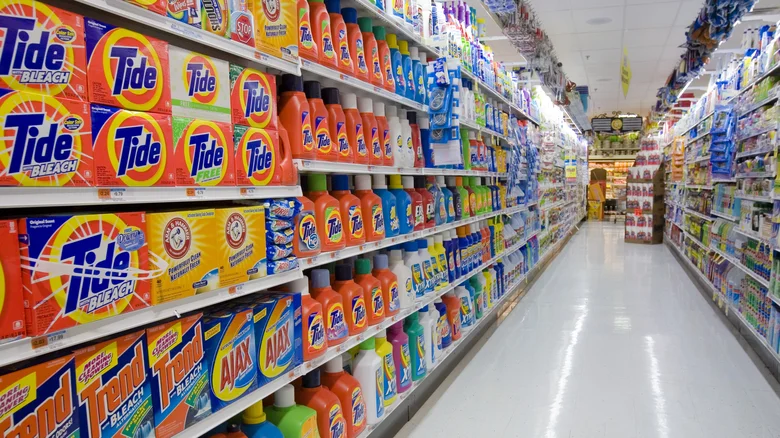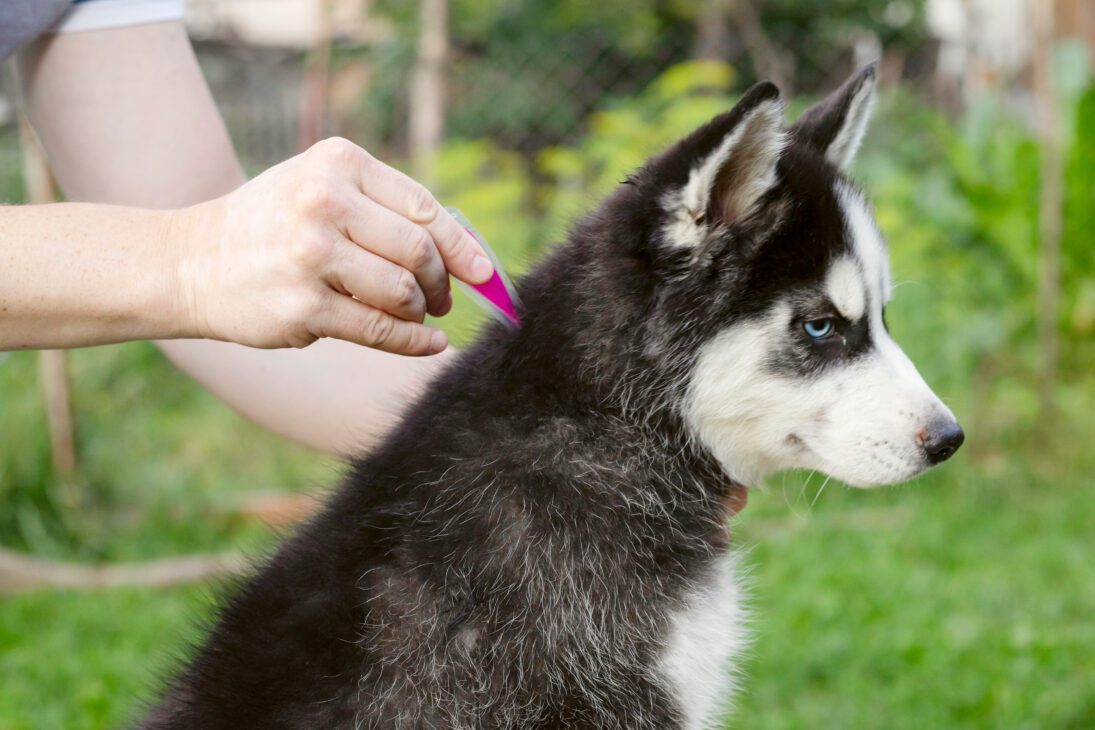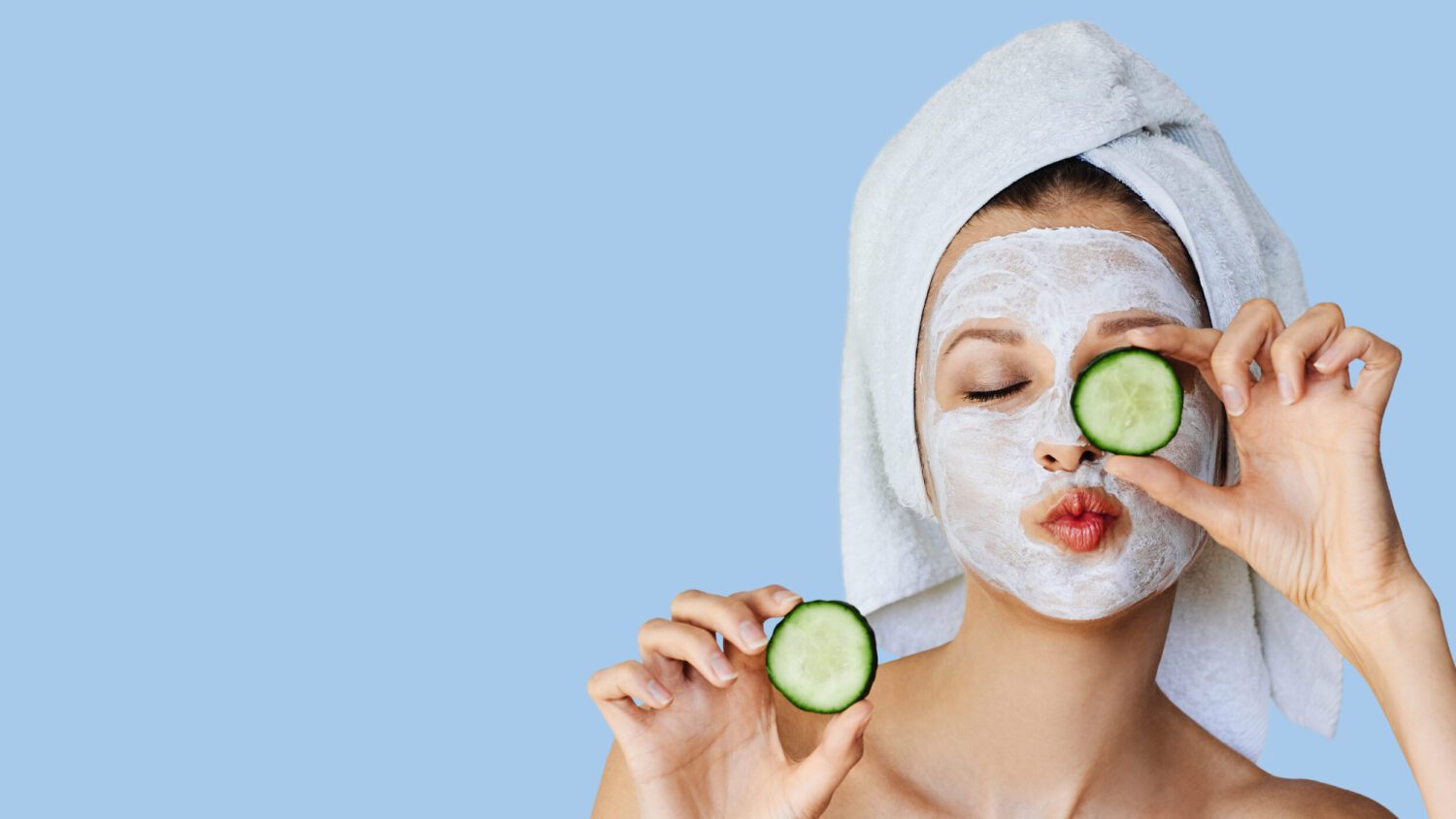The 12 Most Toxic Things in Your Home You Need to Know About

This post may contain affiliate links and we may earn a small commission from qualifying purchases. See full disclosure here.
Let’s talk about the most toxic things in your home – those hidden toxins hiding in plain sight.
Our homes, the places we resort to for comfort and safety, can harbor a shocking amount of hidden toxins.
These toxins aren’t always obvious. They lurk in everyday items – your cleaning supplies, personal care products, even your furniture. But the good news is, once you know what to look for, you can ditch the toxic troublemakers and replace them with safer, healthier alternatives.
I’m here to guide you through it. This post is for anyone who wants to live healthier. Whether you’re a parent, health enthusiast, or someone who wants to live greener, you’ll find tips in this post.
Ready to make your home healthier and happier? It’s easier than you think, so let’s get started!
List of Most Toxic Things in Your Home
Let’s get down to business and expose those hidden toxins in your home. You’ll be surprised at how many everyday items are on this list!
1. Household Cleaners

Those brightly colored bottles under your sink might seem harmless, but many conventional cleaners contain a mixture of harsh chemicals that can wreak havoc on your health.
Common Culprits: Ammonia (found in glass cleaners), bleach (found in disinfectants), phthalates (found in fragranced cleaners), and perchloroethylene (found in carpet and upholstery cleaners).
Health Hazards: These chemicals can irritate your eyes, skin, and respiratory system. Some, like phthalates, are endocrine disruptors, meaning they interfere with your hormones. Others, like perchloroethylene, are linked to cancer.
Healthier Alternatives: Vinegar, baking soda, lemon juice, and essential oils are powerful natural cleaners.
Related: Check out this easy and effective DIY all purpose cleaner recipe!
You can also find plant-based cleaning products that are effective and safe for your family and the environment, like the Branch Basics Concentrate Kit.
This kit includes a plant-based, biodegradable concentrate that can be diluted for various cleaning purposes. It’s a versatile and non-toxic alternative to conventional cleaners.
Evidence: A study published in the American Journal of Respiratory and Critical Care Medicine found a link between frequent use of household cleaning sprays and asthma in adults.
2. Personal Care Products

Your daily beauty routine could be exposing you to a surprising amount of toxins. Many personal care products contain harmful chemicals that can be absorbed through your skin.
Common Culprits: Parabens (preservatives found in shampoos, lotions, and deodorants), sulfates (found in shampoos and soaps), phthalates (found in fragrances and nail polish), and triclosan (antibacterial agent found in some soaps and toothpastes).
Health Hazards: These chemicals are endocrine disruptors, meaning they interfere with your hormones. They can also cause skin irritation, allergies, and have been linked to developmental and reproductive issues.
Healthier Alternatives: Look for personal care products labeled as “natural,” “organic,” or “non-toxic.” Read ingredient lists carefully and avoid products with synthetic fragrances, parabens, phthalates, and sulfates.
Many great brands like OSEA and 100% Pure offer safe and effective alternatives.
Related: 15 Toxic Ingredients to Avoid in Skincare Products
Evidence: A review highlights the potential health effects of phthalates, including endocrine disruption and developmental problems.
3. Air Fresheners and Scented Candles

While these might make your home smell delightful, they often release volatile organic compounds (VOCs) and synthetic fragrances that can harm your health.
Common Culprits: Benzene, toluene, formaldehyde, and phthalates are often found in air fresheners and scented candles.
Health Hazards: These chemicals can irritate your eyes, nose, and throat, trigger headaches, and worsen asthma and allergies. Some, like benzene and formaldehyde, are known carcinogens.
Healthier Alternatives: Essential oil diffusers like this one, simmer pots with herbs and spices, beeswax candles, or simply opening your windows for fresh air are safer ways to freshen your home.
Evidence: A study found that burning scented candles can release significant amounts of VOCs into the air.
4. Food Storage and Cookware

You might not realize it, but the way you store and cook your food can introduce harmful chemicals into your diet.
Common Culprits: BPA (Bisphenol A) and phthalates in plastic containers and wraps, perfluorinated chemicals (PFCs) like Teflon in non-stick cookware.
Health Hazards: BPA and phthalates are endocrine disruptors that mimic hormones and can interfere with your body’s natural processes. PFCs have been linked to developmental issues, hormone disruption, and cancer.
Healthier Alternatives: Switch to glass, stainless steel, or ceramic containers for food storage, like these Pyrex glass food storage containers.
Choose cast iron, stainless steel, or ceramic cookware for cooking. These materials don’t leach harmful chemicals into your food and are durable and long-lasting.
Evidence: A study found that switching to fresh foods that are not packaged in plastic significantly reduced levels of BPA and phthalates in participants’ bodies.
5. Furniture and Building Materials

Even seemingly harmless furniture and building materials can off-gas harmful chemicals, affecting your indoor air quality.
Common Culprits: Flame retardants (PBDEs) in upholstered furniture, foam cushions, and mattresses, formaldehyde in pressed wood products, and VOCs (Volatile Organic Compounds) in paints, varnishes, and adhesives.
Health Hazards: PBDEs are endocrine disruptors and have been linked to developmental and neurological issues. Formaldehyde is a known carcinogen, and VOCs can cause a range of health problems, from headaches and nausea to liver and kidney damage.
Healthier Alternatives: Look for furniture made with natural materials like wood, wool, and cotton. Choose low- or no-VOC paints and finishes. If buying new furniture, let it air out in a garage or outdoors before bringing it inside.
Evidence: The National Cancer Institute provides information on the link between formaldehyde exposure and cancer.
6. Pesticides and Insect Repellents

These products are designed to kill pests, but they can also harm humans, pets, and the environment.
Common Culprits: Organophosphates, carbamates, and pyrethroids are common insecticides, while DEET is a common insect repellent.
Health Hazards: These chemicals can cause neurological problems, respiratory issues, hormone disruption, and have been linked to cancer. They can be especially harmful to children and pets, who are more vulnerable to their effects.
Healthier Alternatives: Essential oils like citronella, lemongrass, and peppermint can repel insects naturally. Diatomaceous earth is a natural pesticide that can help control pests indoors and outdoors.
Evidence: The National Pesticide Information Center (NPIC) provides information on the health effects of pesticides and safer alternatives.
7. Tap Water

Even your drinking water might not be as pure as you think. While tap water in most developed countries is treated, it can still contain contaminants that can affect your health.
Common Culprits: Chlorine (used for disinfection), heavy metals like lead and arsenic, pesticides, herbicides, and pharmaceutical residues can be found in tap water.
Health Hazards: Chlorine, while important for killing harmful bacteria, can create disinfection byproducts (DBPs) that are linked to cancer and reproductive problems. Heavy metals can accumulate in your body and cause various health issues.
Healthier Alternatives: Install a water filter on your tap or use a whole-house filtration system. The Aquasana OptimH2O Reverse Osmosis Under Sink Filter is a great option for removing a wide range of contaminants, including lead, chlorine, and fluoride, providing clean, healthy drinking water.
Reverse osmosis filters and activated carbon filters are effective at removing many contaminants. You can also purchase bottled water from reputable brands, but be mindful of the environmental impact of plastic bottles.
Evidence: The Environmental Working Group’s Tap Water Database allows you to check the water quality in your area and see what contaminants have been detected.
8. Laundry Products

Your laundry routine might be doing more harm than good, as many detergents and fabric softeners contain harmful chemicals.
Common Culprits: Synthetic fragrances, dyes, optical brighteners, and quaternary ammonium compounds (QUATS) are often found in laundry products.
Health Hazards: These chemicals can irritate your skin, trigger allergies, and have been linked to respiratory problems and hormone disruption.
Healthier Alternatives: Look for laundry detergents and fabric softeners that are fragrance-free, dye-free, and made with plant-based ingredients like Molly’s Suds Laundry Powder. You can also try using wool dryer balls instead of dryer sheets to soften clothes naturally.
Related: Make your own natural laundry detergent with this homemade laundry detergent recipe.
Evidence: A study found that exposure to quaternary ammonium compounds (QUATS) in laundry detergents and disinfectants was associated with respiratory problems in healthcare workers.
9. Electronics and E-waste

While they’re essential for our life today, some electronics contain a cocktail of chemicals that can be harmful to your health and the environment.
Common Culprits: Lead, mercury, cadmium, brominated flame retardants (BFRs), and polyvinyl chloride (PVC) are often found in electronics.
Health Hazards: These chemicals can affect your nervous system, kidneys, and reproductive system. Some, like lead and mercury, are especially dangerous for children and pregnant women.
Healthier Alternatives: Minimize your use of electronics when possible, choose brands that prioritize sustainability, and properly recycle old electronics to prevent them from ending up in landfills.
Evidence: A report by the United Nations Environment Programme (UNEP) details the health and environmental impacts of e-waste.
10. Garage and Outdoor Chemicals

The garage often becomes a storage space for various chemicals that can release harmful fumes.
Common Culprits: Paints, solvents, varnishes, gasoline, pesticides, and fertilizers.
Health Hazards: These chemicals can irritate your eyes, skin, and respiratory system. Some, like benzene (found in gasoline), are known carcinogens.
Healthier Alternatives: Opt for low- or no-VOC paints and finishes. Use natural pest control methods and fertilizers. Store chemicals in well-ventilated areas, away from living spaces.
Evidence: The World Health Organization (WHO) classifies benzene as a Group 1 carcinogen, meaning it’s a known cause of cancer in humans.
11. Pet Products

Even your furry friends aren’t immune to the dangers of household toxins.
Common Culprits: Flea and tick treatments, shampoos, and some pet toys can contain pesticides and other harmful chemicals.
Health Hazards: These chemicals can cause skin irritation, neurological problems, and even cancer in pets. They can also be transferred to humans through contact with treated animals.
Healthier Alternatives: Choose natural flea and tick preventives, like the Wondercide Flea & Tick Spray. Look for pet shampoos with natural ingredients. Opt for pet toys made from natural materials like hemp or cotton.
Evidence: A study found that flea and tick collars can release pesticides that can pose health risks to pets and humans.
12. Mold and Mildew

These unsightly growths aren’t just a cosmetic issue. They can also pose a serious health risk.
Common Culprits: Mold and mildew thrive in damp environments like bathrooms, basements, and leaky areas.
Health Hazards: Mold spores can trigger allergies, asthma, and other respiratory problems. Some types of mold produce mycotoxins, which can cause neurological problems and other health issues.
Healthier Alternatives: Keep your home dry and well-ventilated. Fix leaks promptly and clean up any spills or moisture immediately. If you have a mold problem, consult a professional for remediation.
Evidence: A study showed there was evidence to link indoor exposure to mold with upper respiratory tract symptoms, cough, and wheeze in otherwise healthy people.
How to Reduce Toxins in Your Home
Feeling overwhelmed by all the potential toxins lurking in your home? Don’t worry, you don’t have to overhaul your entire life overnight!
Here are some simple, actionable steps you can take to reduce your exposure and create a healthier living space:
Start with Small Changes: You don’t have to replace everything at once. Start by swapping out the most commonly used products, like your household cleaners, personal care items, or air fresheners.
Read Labels Carefully: Get in the habit of reading ingredient lists on everything you bring into your home. Look for products with simple, recognizable ingredients and avoid those with long lists of unpronounceable chemicals.
When shopping for cleaning products, the EWG’s Guide to Healthy Cleaning can be a helpful resource.
Choose Fragrance-Free Options: Synthetic fragrances are a common source of VOCs and other harmful chemicals. Opt for fragrance-free or naturally scented products whenever possible.
DIY Whenever Possible: Making your own cleaning products like this homemade all purpose cleaner, personal care items, or even food is a great way to control the ingredients and reduce your exposure to toxins.
Ventilate Regularly: Open your windows and doors regularly to let fresh air circulate and flush out any indoor pollutants.
Dust and Vacuum Frequently: Dust can harbor a surprising amount of toxins, so regular cleaning is important. Use a vacuum with a HEPA filter to trap tiny particles.
Invest in Plants: Houseplants can help purify the air and remove harmful VOCs. Some great options include spider plants, peace lilies, and snake plants.
Filter Your Water: A good water filter can remove many contaminants from your tap water, ensuring you’re drinking and bathing in cleaner water.
Be Mindful of Plastics: Limit your use of plastic, especially when it comes to food storage and cooking. Opt for glass, stainless steel, or ceramic alternatives.
Shop Secondhand: Buying used furniture and other household items can reduce your exposure to VOCs from new products. Plus, it’s a more sustainable option!
Prioritize Natural Materials: When choosing new furniture, bedding, or clothing, look for natural materials like wood, cotton, wool, and bamboo. These are less likely to off-gas harmful chemicals.
Choose Non-Toxic Pest Control: Opt for natural pest control methods like diatomaceous earth, essential oils, or traps instead of harsh chemical pesticides.
Address Mold and Moisture: Keep your home dry and well-ventilated to prevent mold growth. If you discover mold, address it promptly to avoid health risks.
Remember, every small step you take towards reducing toxins in your home makes a difference. Don’t feel pressured to do everything at once.
Just start with what you can, and you’ll be surprised at how quickly you can transform your home into a healthier and happier space.
Conclusion
So, there you have it – the dirty dozen of the most toxic things in your home.
It might seem a bit daunting, but it’s all about taking baby steps. You don’t have to ditch everything at once. Just start swapping out those everyday items for healthier alternatives, one by one.
Maybe you try that homemade laundry detergent recipe, or switch to a plant-based cleaner. Or perhaps you replace that artificial air freshener with an essential oil diffuser. Every little change counts, and before you know it, you’ll have created a home that feels good and supports your well-being.
This post was about the most toxic things in your home.




